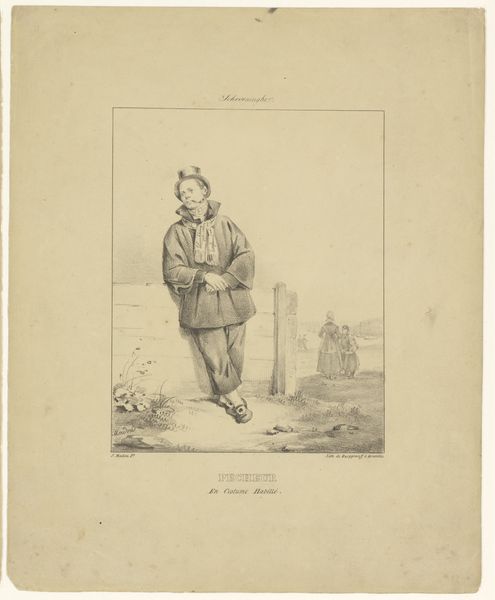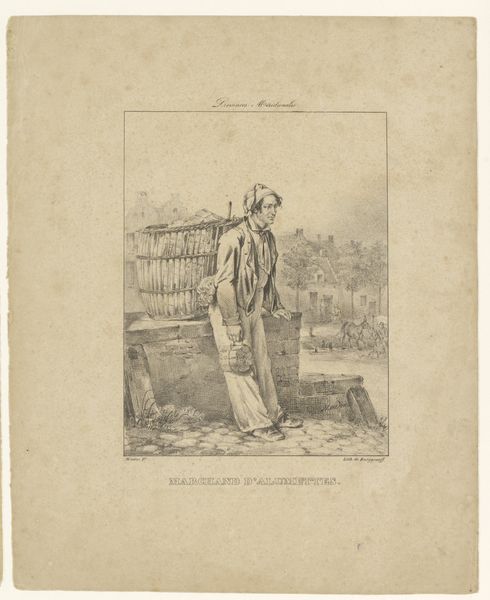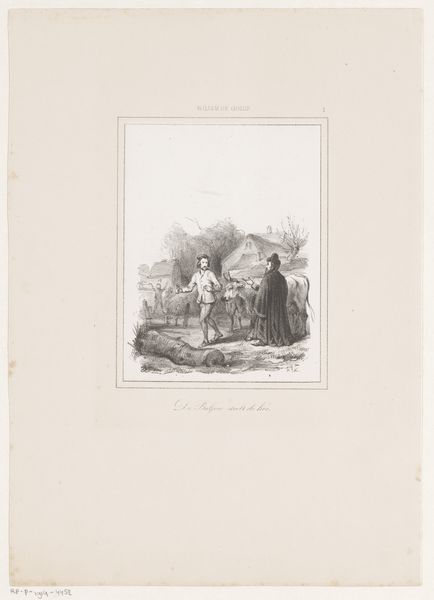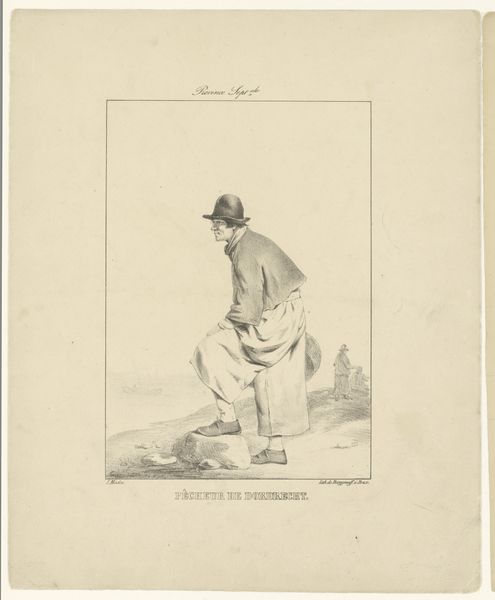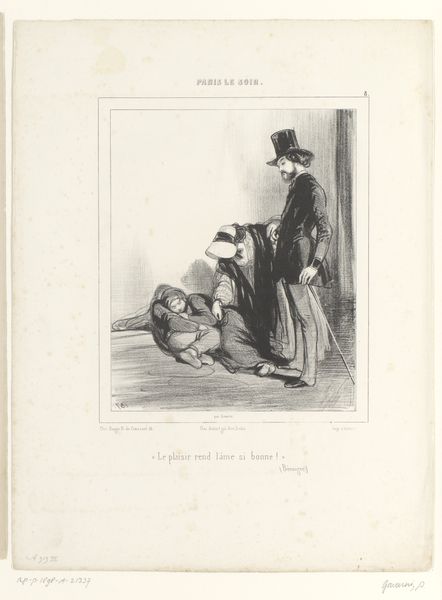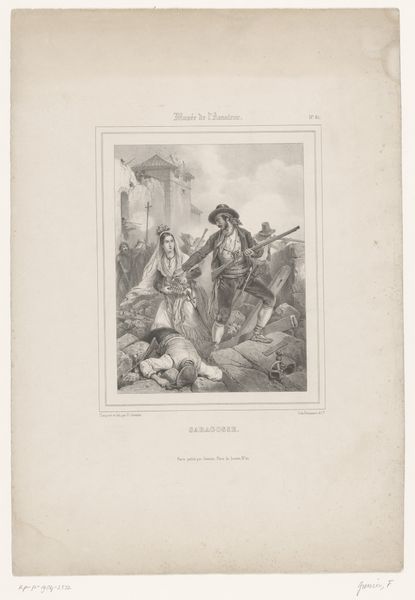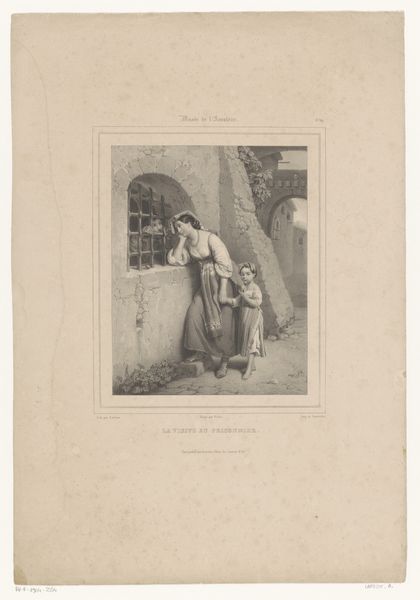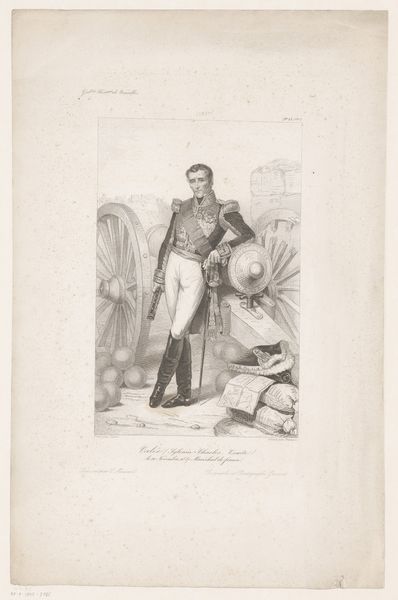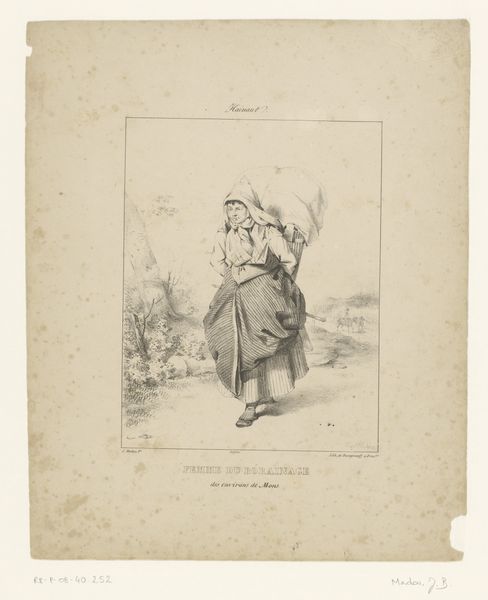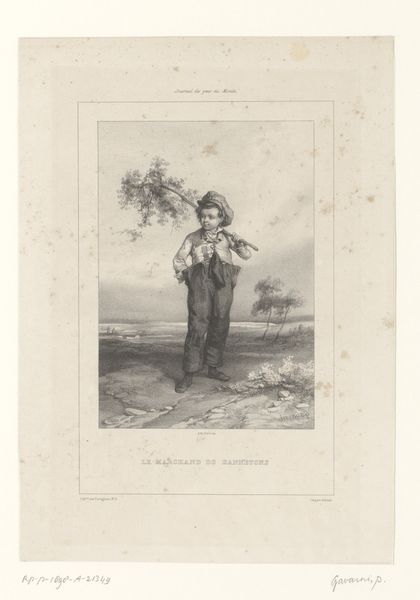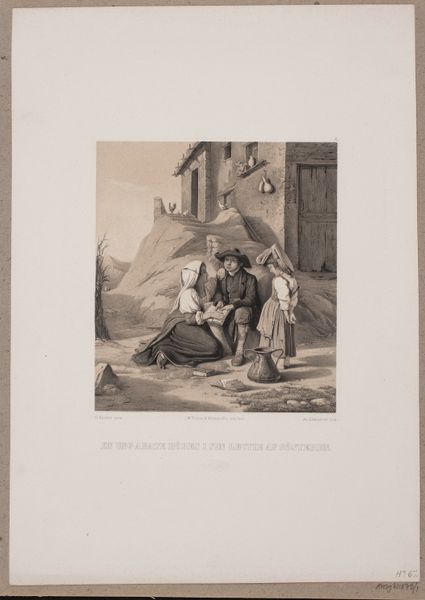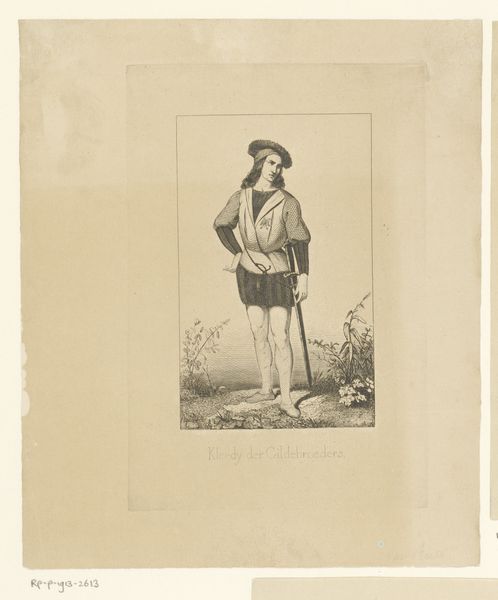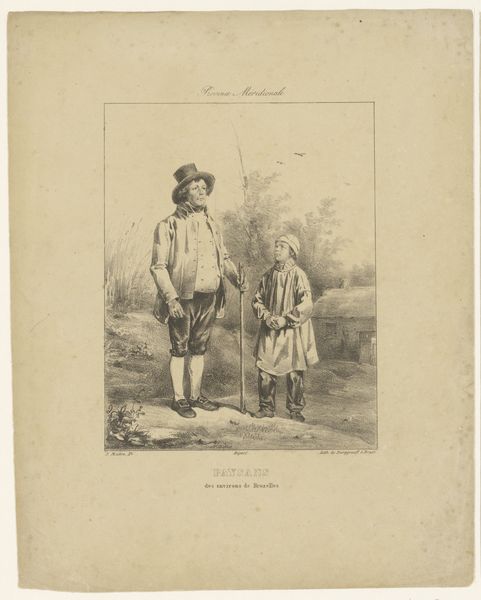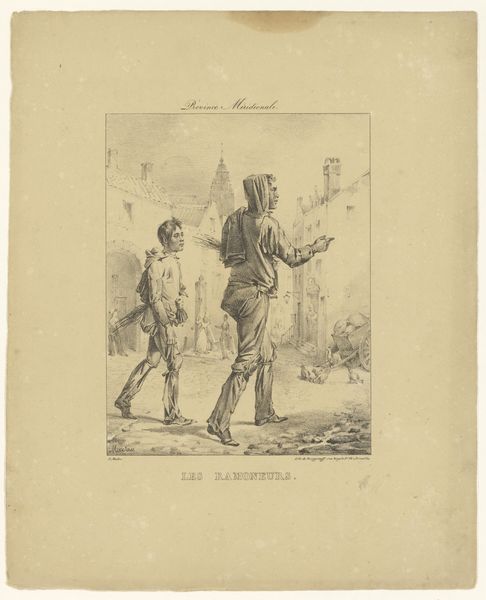
print, engraving
#
portrait
# print
#
landscape
#
romanticism
#
genre-painting
#
engraving
Dimensions: height 340 mm, width 276 mm
Copyright: Rijks Museum: Open Domain
Curator: This is an engraving by Jean-Baptiste Madou, titled "Pijprokende inwoner van Marken aan het water," dating from somewhere between 1825 and 1835. Editor: It has such a quiet, almost melancholy air. The solitary figure and muted tones evoke a sense of longing, don’t you think? The light almost glows behind the boats in the distance. Curator: Absolutely. Observe how the artist uses line and shadow to define the form of the figure and the texture of the landscape. The composition, with its careful arrangement of horizontal and vertical elements, is striking. Note also how the subject is off-center, complicating an otherwise straightforward portrait. Editor: It is much more than a simple portrait, definitely. Given the title and the figure's traditional clothing, isn’t this really a representation of a specific cultural identity? Marken, being an island near Amsterdam, had very distinct traditions, and Madou seems to be making a comment on its people, perhaps even exoticizing them for a broader audience. Curator: Perhaps. However, from a purely formal perspective, the costume serves to define the figure, to locate him within the pictorial space. See how the stripes on his shirt mirror the ripples on the water. It contributes to the overall visual rhythm of the piece. Editor: It’s impossible to ignore the socio-political dimensions, though. We’re seeing a constructed image of Dutch identity, highlighting regional differences, but doing so within a power dynamic, a relationship that the rest of Amsterdam has to this "otherness". Curator: It may very well be that. Regardless, Madou’s control of the engraving technique allows for an extraordinary level of detail, really enhancing the visual texture and contributing to its effectiveness as a visual work. Editor: I agree. Beyond technique, for a contemporary audience, it reminds us how fluid concepts of “national identity” really are. How they're built upon internal difference, and that those lines continue to be negotiated and redefined in an ongoing discussion. Curator: An interesting insight. For me, it demonstrates how a close visual examination is vital in unlocking even complex meanings in a piece of artwork. Editor: I think this work succeeds by opening itself to all different modes of analysis! From the composition and style to its rich historical and societal content, it gives everyone an opportunity to think about what is really portrayed here.
Comments
No comments
Be the first to comment and join the conversation on the ultimate creative platform.
